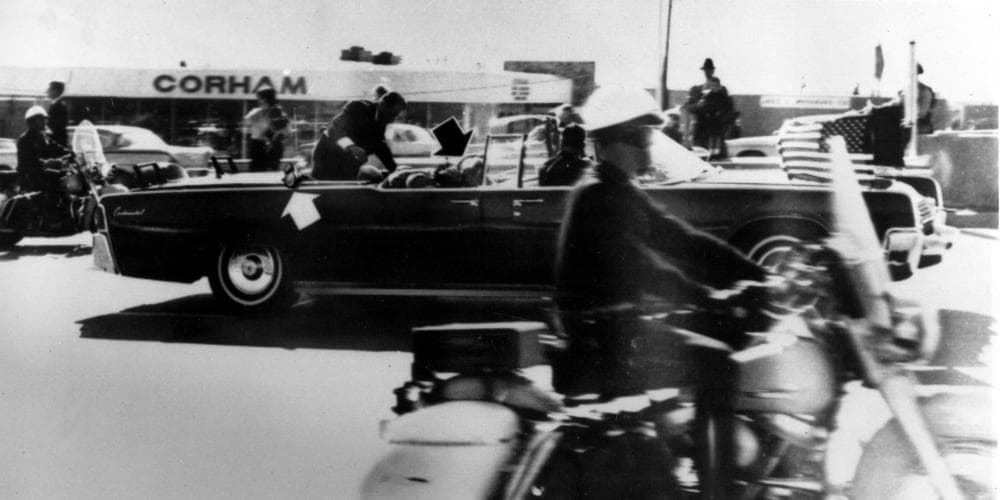Advertisement
Profile In Incompetence: The Real Cover Up Of The Kennedy Assassination
The 50th anniversary of the assassination of President John F. Kennedy is drawing near and already there is an avalanche of new books, documentaries, and movies hitting the cultural mainstream purporting to shed light on one of the great historical mysteries of the 20th century: who or what actually killed JFK?
Depending on your political or ideological persuasion, the responsible party or parties could be anyone from rogue elements of the Central Intelligence Agency to shadowy organized crime figures to greedy Texas oilmen.
Like the autumn leaves that collect in our backyards, these theories are as abundant as they are colorful. Yet do they really get us any closer to the truth of what really happened on that long ago tragic day in Dallas? The answer is no because they generally fail to take into account the massive governmental documentation that has been released on the subject over the years. And if you review the available material, you will come to the unmistakable conclusion that President Kennedy was the victim of no grand conspiracy but of inexcusable incompetence on the part of our Federal Bureau of Investigation under the leadership of then director J. Edgar Hoover.
President Kennedy was the victim of no grand conspiracy but of inexcusable incompetence on the part of our Federal Bureau of Investigation under the leadership of then director J. Edgar Hoover.
For Lee Harvey Oswald, the troubled young man who fatally shot the president from his improvised sniper’s nest on the sixth floor of the Texas School Book Depository Building overlooking Dealey Plaza, should not have been within a mile of Kennedy’s presidential motorcade. A few weeks before the assassination, Oswald had left an angry note at the local Dallas FBI branch headquarters warning he would “blow up” that office and the Dallas Police Department if one of its employees did not stop “bothering” his wife Marina. Marina, a native Russian who had married Oswald in 1961 after the former U.S. Marine defected temporarily to the Soviet Union, had been interviewed about her husband’s communist political activities on two separate occasions by James Hosty, a bureau field agent.
Amazingly, there was no concerted follow-up on the Bureau’s part that would have removed or at least detained Oswald from the Texas School Depository during Kennedy’s Dallas visit. Hosty, who would eventually be censored and reassigned to the Bureau’s Kansas City, Missouri office for his failure to act, reportedly told a Dallas police officer in the confused aftermath of the shooting that the FBI thought Oswald was certainly “capable” of killing Kennedy “but we didn’t dream he would do it.”
This was not the only glaring error the Bureau had committed. Even though Oswald had been a defector and an enthusiastic supporter of Fidel Castro’s communist revolution in Cuba, going so far as to contemplate high-jacking a passenger airliner to the Caribbean Island at one point, Hoover’s agents saw no reason to place him on the Security Index, a federal listing of “dangerous” individuals who posed a potential threat to the nation’s security.

Our agents “were worse than mistaken,” Hoover concluded after a secret internal FBI review of the assassination revealed these shortcomings. “Certainly no one in full possession of all his faculties can claim Oswald didn’t fall within this criteria.” Sixteen other agents would be disciplined for their inability to properly identify and deter the obvious danger Oswald posed to the president’s life. “There is no question in my mind [that] we failed in carrying through some of the salient aspects of the Oswald investigation,” Hoover privately confessed. “It ought to be a lesson to all.”
Of course, Hoover could never admit this publicly. He had a hard earned reputation for being the country’s chief law enforcement officer to maintain and he personally worried that if it became known the Bureau had dropped the ball here, public calls for his removal as Director would be automatic and unavoidable. “I think it would be very, very bad to have a rash of investigations on this thing,” he declared.
'There is no question in my mind [that] we failed in carrying through some of the salient aspects of the Oswald investigation,' Hoover privately confessed. 'It ought to be a lesson to all.'
So he did what most bureaucrats do in the private and public sectors when faced with similar embarrassment — he covered it up. Working closely with the seven-member Warren Commission which was tasked by President Lyndon B. Johnson to “uncover all the facts concerning the assassination of President Kennedy,” he made sure not a hint of blame fell on him or the Bureau. That was the real cover up of the Kennedy assassination.
To his closest family members, then Attorney General Robert Kennedy, the slain president’s brother, condemned the Warren Commission’s final report as “a shoddy piece of craftsmanship.”
Shoddy may also be the best description for the FBI’s mishandling of this tragic and entirely avoidable affair.
This program aired on November 12, 2013. The audio for this program is not available.